
How Salt’s Cure Became L.A.’s Quintessential Breakfast Joint
Salt’s Cure has been a fixture in Los Angeles’ breakfast scene for over a decade, beloved for its house-cured meats and oatmeal griddle cakes topped with rounds of cinnamon-sugar butter. Over the last several years, the business has evolved in myriad ways, from expanding into dinner service to opening several locations of its Breakfast by Salt’s Cure sister restaurants on the East and West coasts.
But when Salt’s Cure first landed in West Hollywood in 2010, there wasn’t really anything like it. Chef-owner Chris Phelps brought a carefully sourced ranch-to-table ethos to L.A.’s breakfast scene. He bought whole animals, house-cured thick strips of bacon, and ground his own sausage. And the perpetual line of hungry customers waiting to get inside proved that he was on to something big.
Phelps came from a fine-dining background, working in the kitchens of white-tablecloth restaurants from Baltimore to Jacksonville. But L.A.’s farm-to-table movement, and the chefs who propelled it, like Nancy Silverton and Suzanne Goin, convinced him to stay in California. He went on to work at well-loved and now-shuttered hot spots like Canelé and The Hungry Cat before launching Salt’s Cure with former partner Zak Walters (who left the business in 2017).
In need of bigger digs, Salt’s Cure moved to Hollywood in 2015. The new location — with its full bar, wood paneling, and floor-to-ceiling windows — was a fitting space for dinner service. (In 2016, the late Los Angeles Times food critic Jonathan Gold wrote that this location had the best pork chop in the city.)
Still holding the lease on the former West Hollywood location, Phelps returned to his original space in 2017, opening Breakfast by Salt’s Cure. In the years since, Phelps has weathered the pandemic, and opened more Breakfast outposts in Santa Monica and, recently, New York’s West Village. And there’s still plenty more to come. We spoke with Phelps about the secret to his success, his celebrity fans, and what’s on the horizon for Salt’s Cure.


When you first opened, why did you choose to focus on breakfast?
Chris Phelps: The concept for Salt’s Cure was whole animals. We were going to do a pork chop at dinner, and sausage and bacon at brunch, so the basic menus were all set. But [we wanted] to establish brunch first, with a full, clear energy. Everyone who opens a restaurant with dinner service says they’re going to put a date on adding brunch, but it never happens — brunch is always postponed until finally you just force it out. That’s normal. But I don’t know if it was because we had all this sausage and bacon already planned — and it was the best bacon that I’d ever had — it just seemed easier to start with brunch and add dinner. We got black cod and cured it like lox. The griddle cakes, of course I love them, too, they’re a family recipe. That was the opening menu. It was simple and thoughtful.
The oatmeal griddle cakes are a fixture. What’s the story there?
My mom has made oatmeal griddle cakes since I was 11 months old. We would have them as a family every Saturday, and then when I went to college, I would make them in my dorm. When I was cooking in restaurants, I would put them on the menu with some duck breast and blackberry compote, as a chicken-and-waffles type of thing, and it was always a hit. There were a bunch of renditions of that too, like duck leg confit, or a foie gras butter that melted on the pancakes. You can still get some version of that at Salt’s Cure at night. I feel like they just happen to be wholesome and delicious, and it set a high bar for other items.
You’ve always been very particular with the sourcing of your ingredients. What are your standards, and why is that so important to you?
To find the best-quality ingredients for Salt’s Cure, I started flying up to San Francisco and renting a U-Haul. I would fill it with pigs from Napa Valley, veal from Point Reyes, and half a steer from Sonoma and drive it all down in a van full of ice because there was no other way to get delivery [from small farms] to L.A. at that time. But that small farm quality was necessary for the flavor to be good enough for the pork chop, burger, and breakfast sausage I wanted to make. Now that we’re also in New York, we do the same with small farms there, so we’re not traveling across the country or anything. But it’s the same philosophy: It’s fresh from being local. That’s essential to the quality.
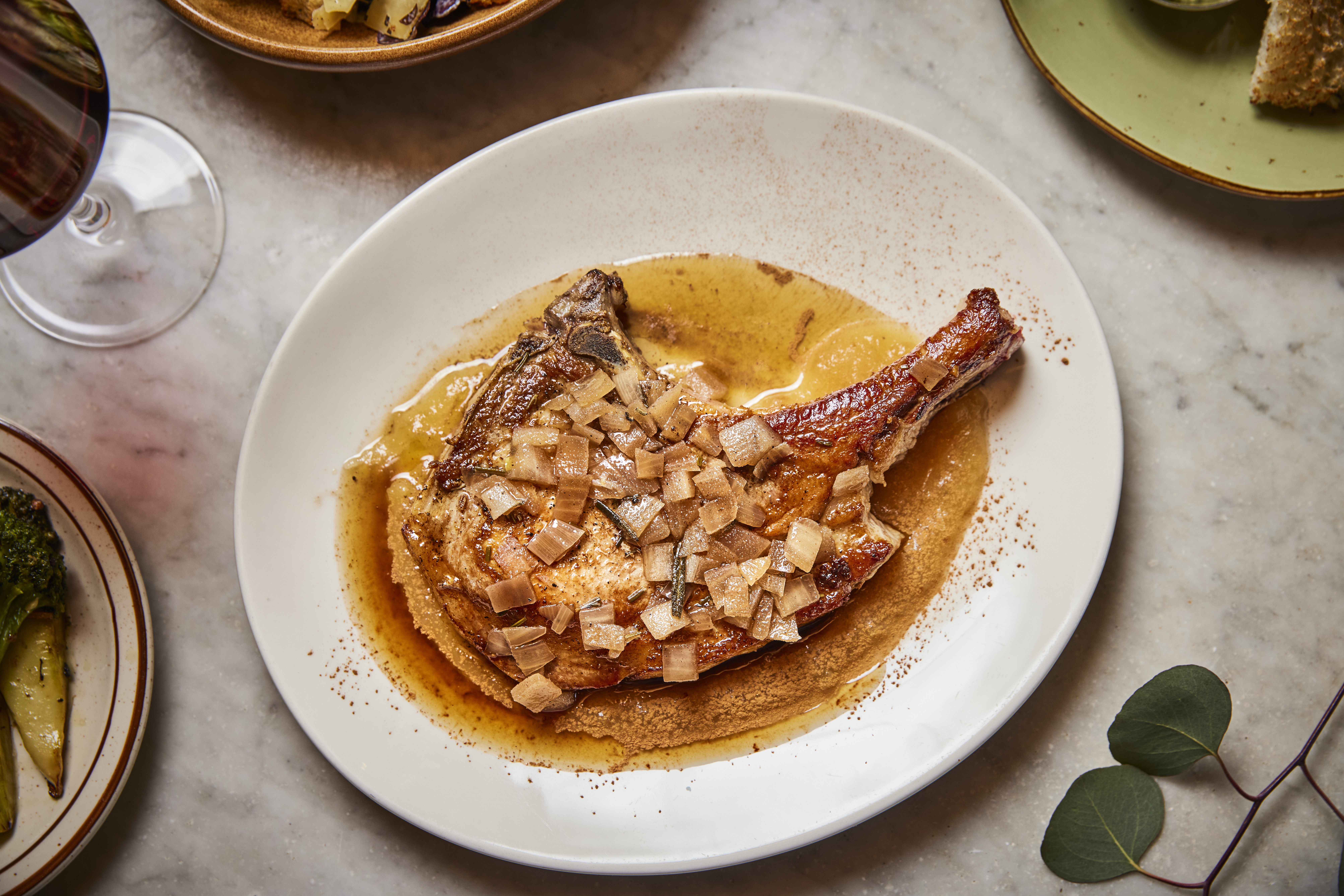
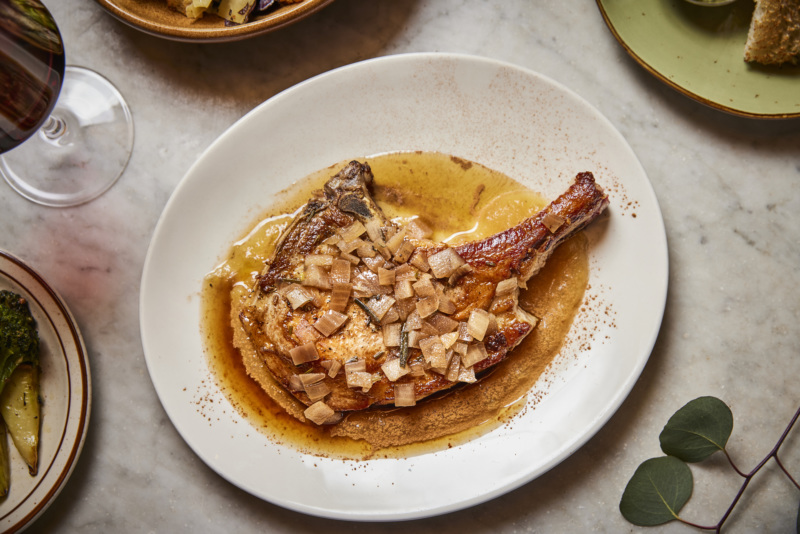
I used to live in West Hollywood and remember how busy Salt’s Cure was, even when it first opened. The lines!
[Former Los Angeles Times food critic] S. Irene Virbila came in maybe the second day we were open. And then on Wednesday, her write-up came out, and it was called something like, “The Seven Best Brunches in L.A.” It was us, Canelé, Hungry Cat… It was really weird and funny. Ever since then, we’ve basically been busy for every brunch for 11 years.
When did you start serving dinner at Salt’s Cure in the West Hollywood location?
It was the next week [after our first brunch]. We just opened with brunch on Saturday and Sunday, and then closed for two days and then opened for dinner Wednesday.
What was one of the first dinner items you served at Salt’s Cure that really stuck?
Definitely the pork chop — it was just the pork chop on a plate, with nothing else. I remember Dan Mattern, who now runs Friends & Family [a bakery and restaurant in East Hollywood], came in and ordered it. I sent it out, and he was like, “Wow, nothing else?” He made fun of it in good spirits; it became a joke we both thought was hilarious. But it was because the pig was so good. It was a hybrid animal with European wild boar, and it had been living in a black walnut forest, foraging for nuts. And then it would drink the whey from Cowgirl Creamery [a cheesemaker in Northern California] as juice, basically. It was this super-powered thing with dark pink, well-marbled meat. Incredible, really. So all we did was just put salt on it, grill it, and brush it with some brown butter.
You moved Salt’s Cure to Hollywood in 2015, and opened Breakfast by Salt’s Cure in West Hollywood in 2017. Can you explain each of the locations and how they’re different?
Salt’s Cure in Hollywood is the only one that has dinner and is also open for lunch. At Salt’s Cure’s brunch, our best-selling item is the all-star breakfast, which is two pieces of bacon, two sausages, two griddle cakes, two eggs, and a biscuit and jam. When you look at the sales, that and the stack of oatmeal griddle cakes do the heavy lifting. Breakfast by Salt’s Cure is based off of that, but with options — you can get chicken sausage or a vegan sausage, and flavored griddle cakes, just those items, basically, but you can customize them a bit. Both concepts are pretty chill, but Breakfast is counter service. Salt’s is full-service with cocktails, so it’s a bit more of an event.

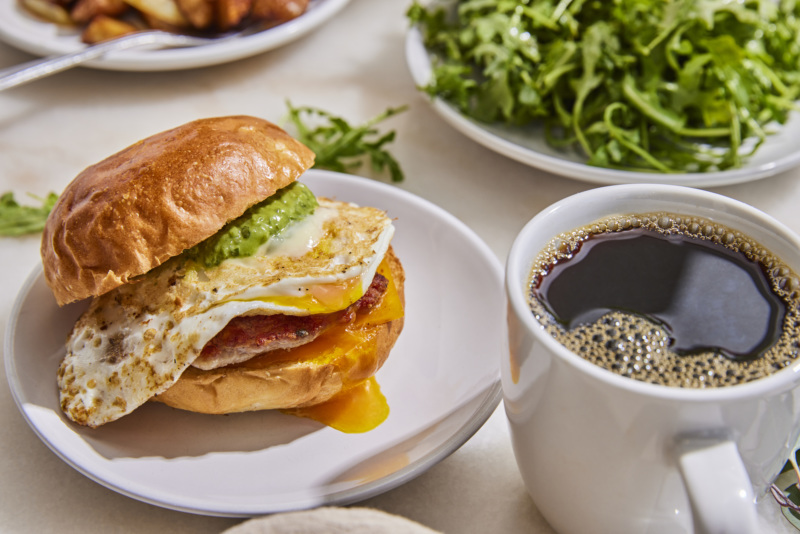
It seems like you’ve cultivated something of a celebrity clientele at Salt’s and Breakfast. Can you talk about how that happened?
I think just because it’s L.A., entertainment people live there or have meetings there. They’re just people, too, and they want to eat, and that’s really all it is. We’re low-key, so I imagine they feel a little sense of normalcy instead of going into a place that’s fancy where they get rushed into the VIP room where no one will ever talk to them or look at them, which I’m sure is great — I have no idea what it’s like to be followed around.
How did the pandemic affect you?
At Breakfast, we just did to-go, and it was tough but okay. We definitely saw sales drop considerably and we had to pay Uber 15%, which, if you think about it, will drive you insane. You just have to stay on the bike and be helpful. Salt’s Cure really took a hit. All the offices around us are empty now. And all the staff was gone. It was just me and my general manager, trying to make it work. It was absolutely crazy. We hired one person back after a couple months, and then another person. We were figuring out how to make stuff work more efficiently and it definitely changed us. I think that’s why we went back to the comfort of the old dishes, to reset a little.
What’s one of those dishes that elicit the most comforting memories for you from Salt’s Cure?
We revisited some of the original dishes at Salt’s Cure that did really well, like this chili pork shoulder with grits. You cut cubes from the whole shoulder section into cubes, cure them, put a chorizo spice all over them, and then braise them in pork stock. It’s super comforting when nestled over grits. I actually think Nas rapped about this dish in one of his songs. He doesn’t say Salt’s Cure by name, but he says something like, “I’ll get the pork over grits like chef recommended.” [Note: The exact lyrics say, “Over creamy polenta, it come chef recommended.”] It was a couple years after he started coming in a decent amount. He might be rapping about somewhere else, but it fits, and he got that dish several times.
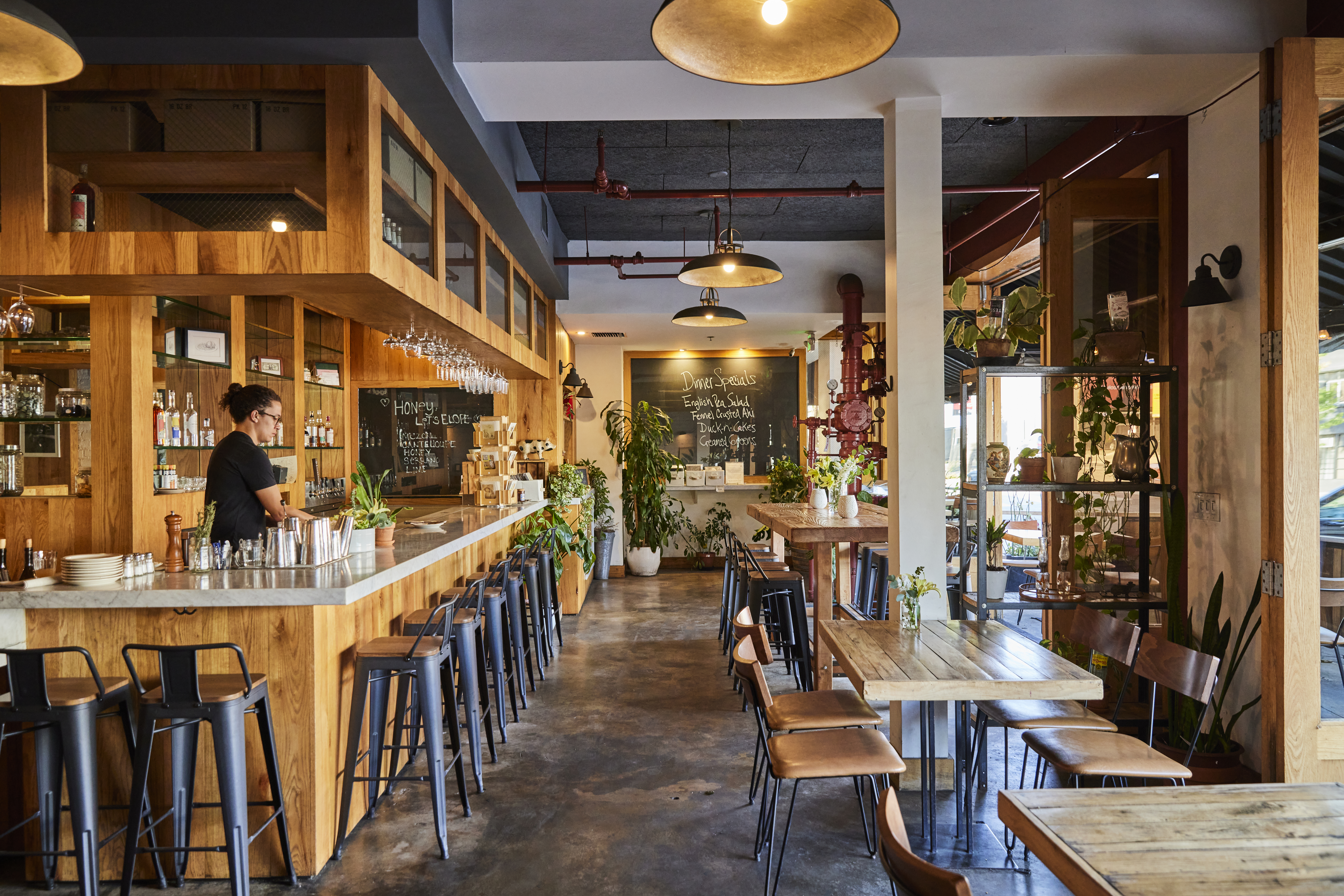
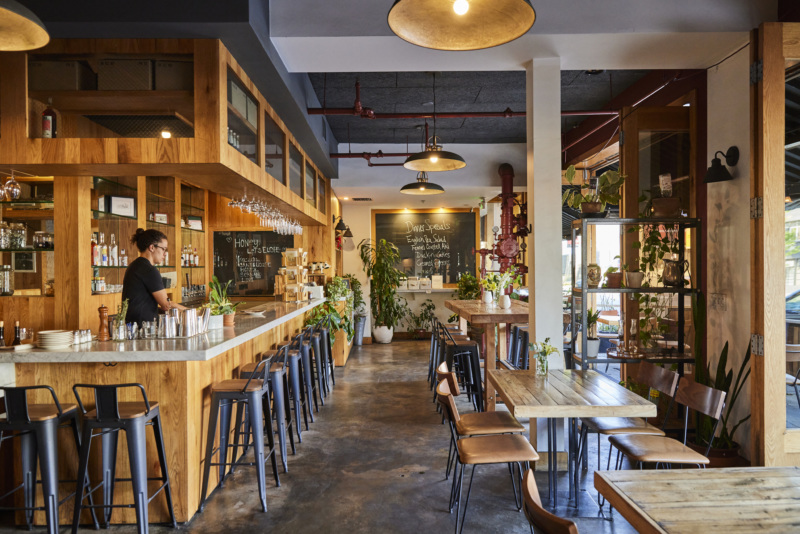
What made you want to open in New York?
In 2019, I got this weird message from a celebrity [Gigi Hadid]. She sent one of her friends into West Hollywood to drop off a letter saying, “Hey, do you want to open in New York?” I had it in my business plan already that we’d go to New York, Oakland, and Austin. I came out to New York in 2019 to meet with [Hadid] and she was super-down. I did some homework and found a few spots, but then the pandemic happened, and it just put everything on hold for a while.
But then in Santa Monica, I finally got this amazing deal that I’ve been looking for for years [and opened Breakfast by Salt’s Cure there in March 2021]. In June, I was like, “This is working already. I should go back to New York and see what’s going on.” I got to the airport and Nancy Silverton was on my plane. I’m like, “Nancy, I think I’m going to sign a lease.” When I got off the plane, she was like, “Do it!” Well, I guess that was a sign. After I saw the space in the West Village, the next day basically, I just went for it. [Gigi] isn’t a partner, but I still want her to get on board to take us to the next level.
Are you planning to open more locations in New York?
Yes, there will be something opening in July in Carroll Gardens, Brooklyn, which is going to be more like West Hollywood in its size and shape.
Since you first opened Salt’s Cure and Breakfast, so many new breakfast spots have opened all over L.A. What makes your restaurants stand out?
Definitely the griddle cakes. I really do think they’re the best pancakes in the world. And they give me the luxury to pay attention to the other ingredients. I make sure the eggs are the best we can get, with really dark yolks and strong whites. We grind the sausage fresh multiple times a week. It’s never frozen. In L.A., we get the best orange juice, with citrus from Schaner Farms.
We don’t have to reinvent and we don’t have to come up with some wacky thing to market that people don’t understand. We’re not doing anything too crazy — we’re not even poaching eggs. It’s all in the sourcing and preparation techniques. Everybody knows what sausages are. They’ve all had them. They can tell if it’s good.
Jean Trinh’s food and culture stories have appeared in The Washington Post, Los Angeles Times, and Food & Wine. Follow her on Twitter and Instagram. Follow Resy, too.
















